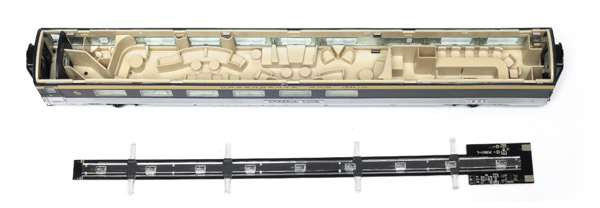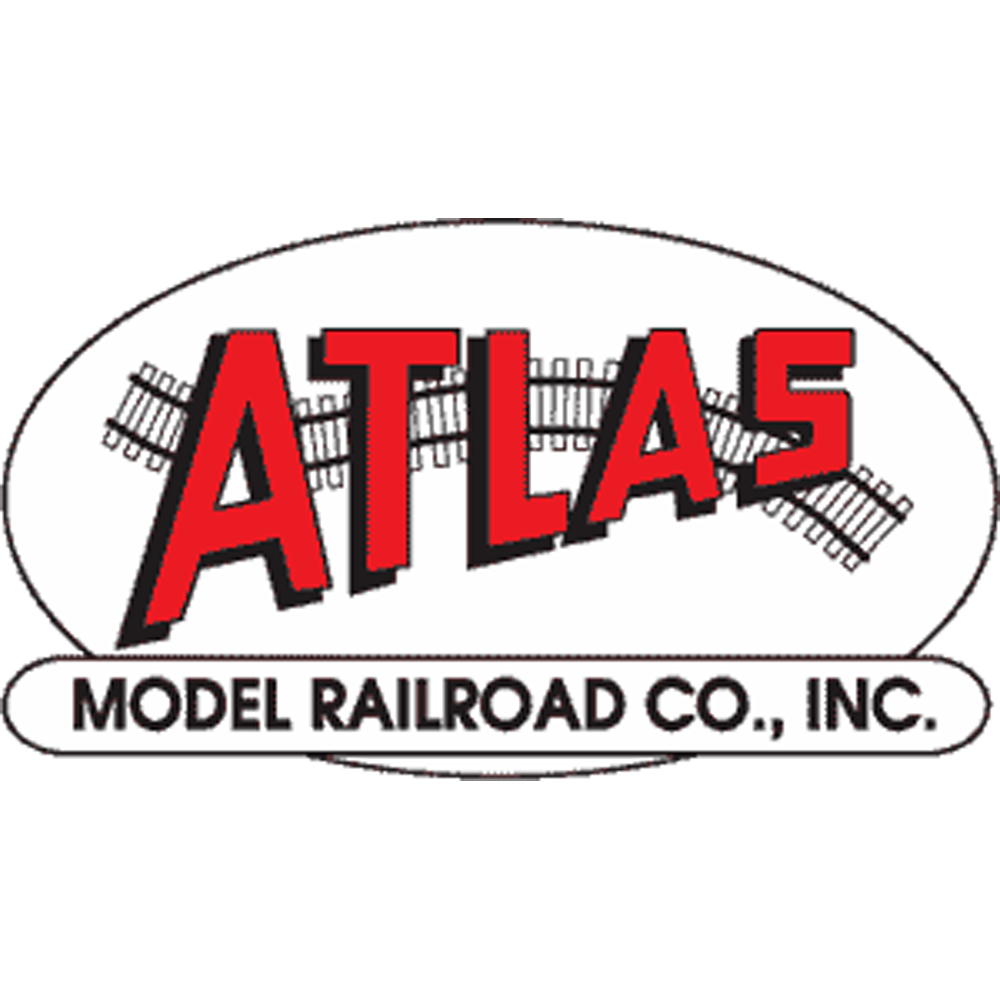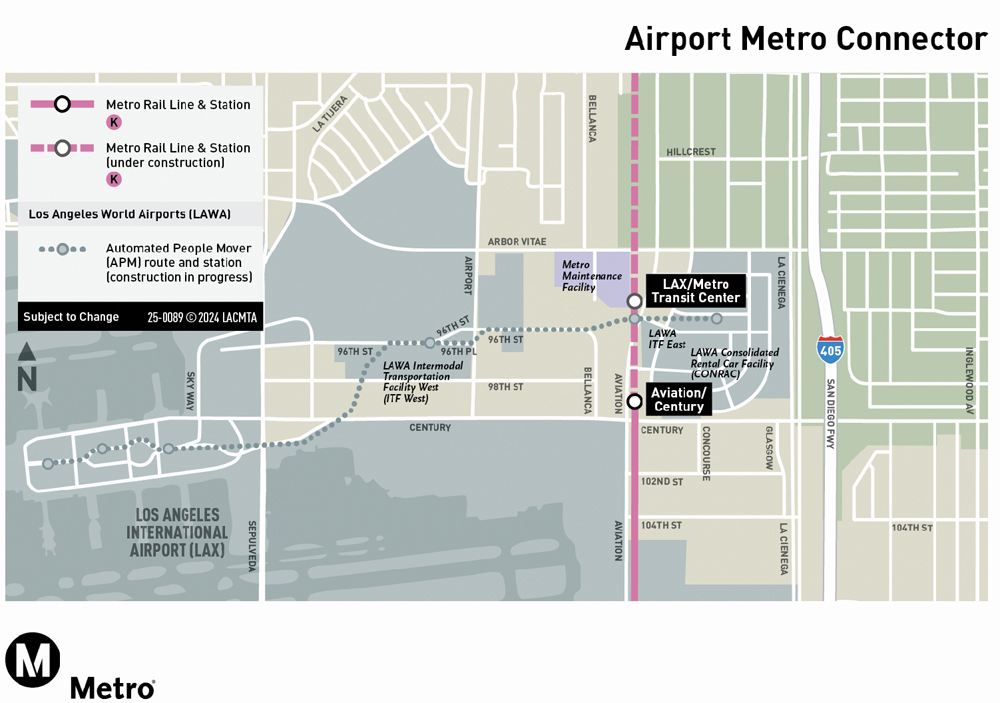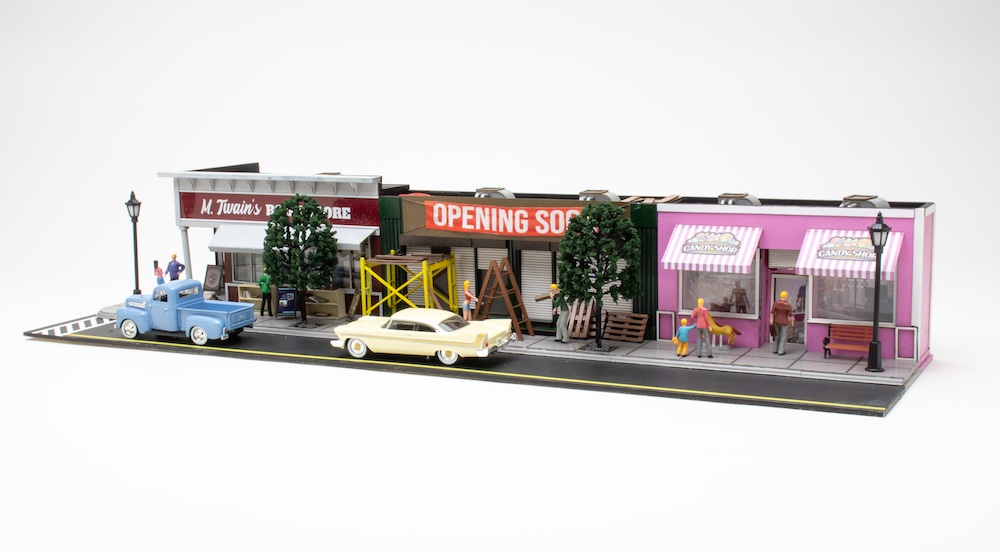After the C&O began receiving its huge new postwar passenger car fleet in 1950, the Pere Marquette service was expanded with more pairs of trains to Chicago. Thus one pair of trains linked Detroit and Grand Rapids on fast 3-hour schedules, while several longer consists ran between Grand Rapids and Chicago on 5-hour schedules.
A variety of C&O’s new Pullman-Standard cars were assigned to these trains, so the Walthers models represent the second consists that operated on the Pere Marquettes between 1954 and 1963.
The model is made from all-new tooling that closely matches the dimensions shown on a C&O data sheet in the Pere Marquette Passenger Car Pictorial book by Arthur B. Million, published by the Pere Marquette Historical Society Inc.
Our sample is an excellent replica of car no. 1903, named Chessie Club. It’s superbly finished and ready-to-run. The model is made up of more than 80 molded styrene parts and formed wire details. All of the assembly work is first rate.
The excellent instruction sheet includes an exploded-view illustration that shows how all of the parts fit together. The car’s floor, sides, and ends all snap into the frame, and then the details are applied. More than 17 underbody parts represent the air conditioning, air brake, battery, electrical, and water systems.
A pair of steel weights is sandwiched between the interior and the main floor so truck electrical pickups and contacts can power the optional interior lighting.
Sprung diaphragms are provided at both ends, and the car has Proto-Max magnetic couplers mounted at the proper height in swinging coupler boxes.
The car rides on a pair of General Steel Castings type 41-N-11 4-wheel trucks. These trucks have tubular axles with National Model Railroad Association RP-25-contour metal wheels. All of the wheels collect current for interior lighting (if used).
The carbody has a plated metal finish that simulates the stainless steel on the prototype’s fluted lower sides and window frames. When this plating is combined with the smoothly-applied C&O Enchantment Blue and Federal Yellow paint, the effect is strikingly realistic.
Our sample came neatly lettered in the post-1950s C&O standard script scheme. The yellow C&O heralds are properly applied on both sides in the blue window band next to the vestibule. All of the windows have stainless steel frames and lightly-tinted glazing.
Overall, Walthers has done a superb job of capturing the look and appearance of the colorful prototype Chessie Club as it operated in the last decade before Amtrak.
Manufacturer:
Wm. K. Walthers Inc.
P.O. Box 3039
Milwaukee, WI 53201
www.walthers.com
Road name: Chesapeake & Ohio
Era: 1954 to 1963
Features:
- 8-wheel electrical pickup
- Factory-installed grab irons
- Interior details
- Optional light-emitting diode (LED) DC/DCC lighting
- Proto-Max metal couplers
- Tinted windows
- Turned metal 36″ wheels (mounted in gauge)
- 24″ minimum radius
- Weight: 7 ounces (matches NMRA recommended practice RP-20.1)
















A correction is needed: the Pere Marquette itself introduced these trains. Not the C&O. The C&O did not name these trains they carried their original name from their original owner, the PM.
The PM merged into the C&O on June 6th, 1947, almost a full year after the trains came to the PM. And they arrived in PM livery, not C&O. They ran only between Grand Rapids and Detroit.
It was the intent of the PM to expand service into Chicago. Thus the extra E7-As (103-108) ordered. The merger happened before the other trains were ordered. Making them now C&O trains, from Chicago to Detroit.
Due to the popularity of the C&O, and the virtual unknown existance of the PM (a class 1 carrier), these trains are commonly associated with the C&O. And this is carried over into the modelling community as we see above.
Credit is to be given to the PM for truthfully having the "first 'post-war' streamliners", and no one else. While the PM following is small compared to other class 1's, we would love to see accurate models made, reflecting the PM road. Not an NKP berkshire with PM lettering, or even PM name trains under someone elses flag.
While the Walthers name train is a very nice set, it is not the first post war streamliner, and weve been hungrily waiting since 1947 for this train to return! Model or otherwise. Manufacturers – please take note.
"The prototype trains were introduced by the C&O in 1946 as America’s first postwar streamliners." Actually, the original train was introduced by the Pere Marquette Railway. C&O Absorbed the PM in 1947.
Great review. These cars made the train ride very pleasant for the passengers. Thanks for the heads up on the necessary track radius to use the car. A lot of people have tight curves on a small table layout at home. Still, it is wonderful to check out how the Big Boy's toys are. Thanks.
The prototype of this car is currently in use every Saturday on the Potomac Eagle Scenic Railroad in Romney, WV. It is owned by Mr. David Corbitt's Eagle Canyon Car Leasing Co. I compared the two while working there this past weekend. They even got the interior layout correct. The only difference I could spot with out a measuring tape, was that the stainless fluting and skirts have been removed. Walthers did an excellent job on this car.
The prototype of this car is currently in use every Saturday on the Potomac Eagle Scenic Railroad in Romney, WV. It is owned by Mr. David Corbitt's Eagle Canyon Car Leasing Co. I compared the two while working there this past weekend. They even got the interior layout correct. The only difference I could spot with out a measuring tape, was that the stainless fluting and skirts have been removed. Walthers did an excellent job on this car.
It is a very nice looking car and I would be happy to have one on back of my Amtrak train. I always put private cars on my Amtrak train. It gives my train that realistic look where a private car would bring up the rear of the train. I see them all the time on many different Amtrak trains that would roll through Utica on a daily basis,
These cars would be good sellers in a DRGW 4 strippe paint scheme.
A beautiful car. I only hope we get Seaboard Air Line Silver Meteor but probably not popular enough
Like many other streamlined cars originally ordered for the C&O's stillborn "Chessie" train, which was supposed to be powered by an ultramodern steam loco, a car identical to this one went to the Denver & Rio Grande Western, which named it "Castle Gate". In October 1967 it and several other matching "half-fluted" cars were bought by the Delaware & Hudson, which repainted their orange or Aspen Gold livery blue and yellow. This car became D&H 43 and some time later was renamed Champlain. Guilford Rail System kept the car when it let the D&H go bankrupt; with its stainless steel fluting removed, it now wears PanAm Railways' dark blue and is occasionally still used as part of a short business train.
A Walthers rep told me at the West Springfield, Mass. train show in January of this year that it was very likely that the firm will produce this car decorated for the D&H. I certainly hope so!